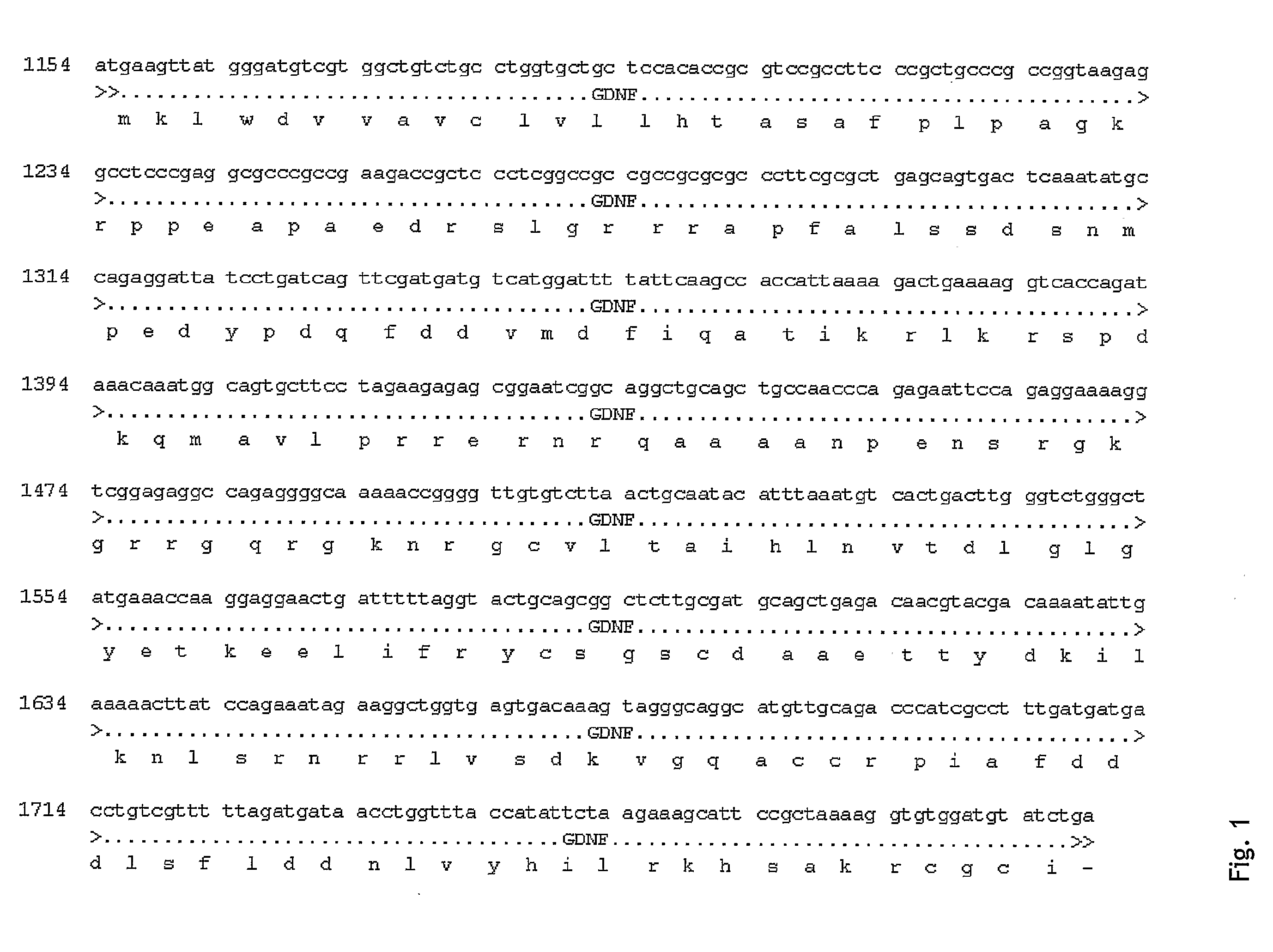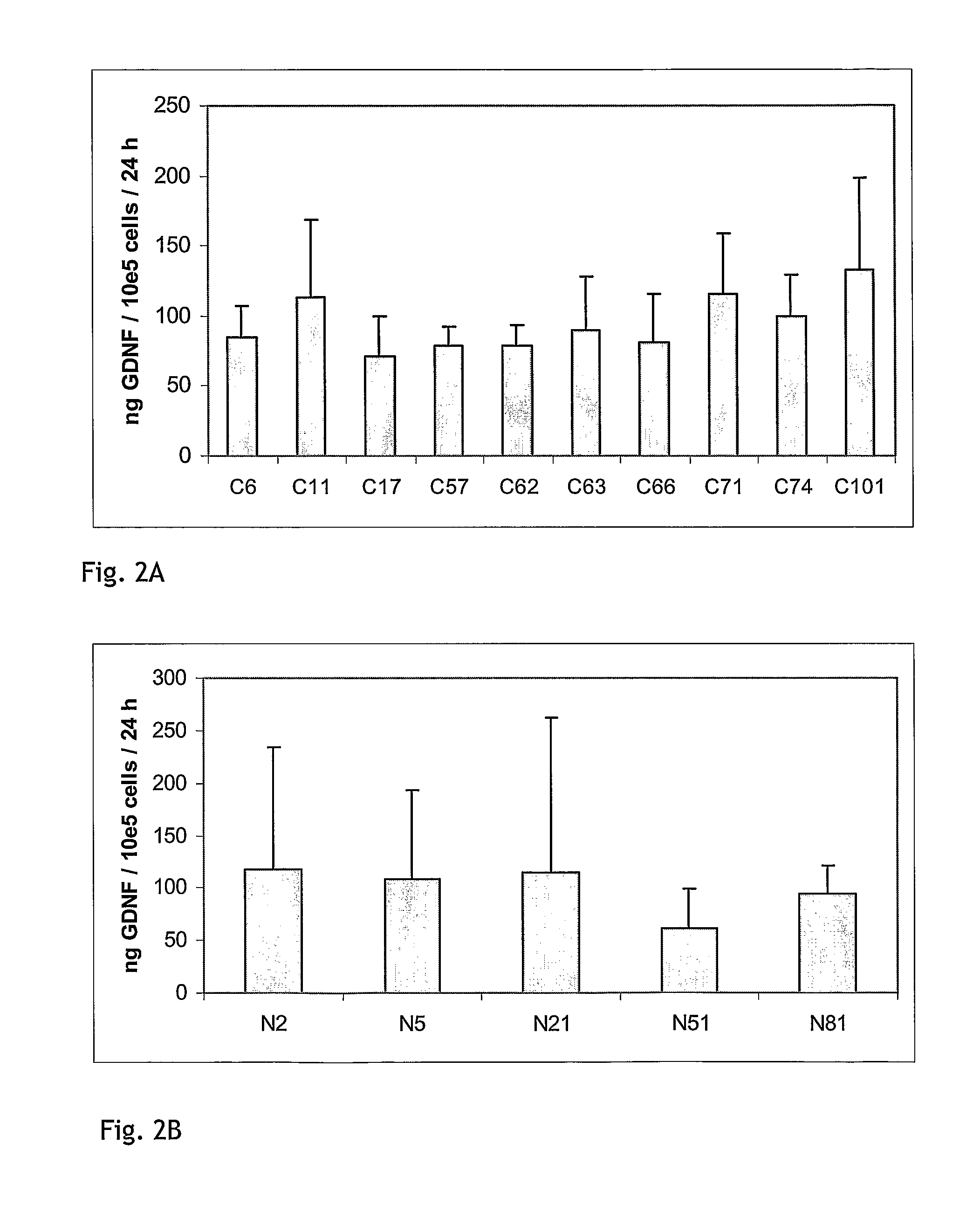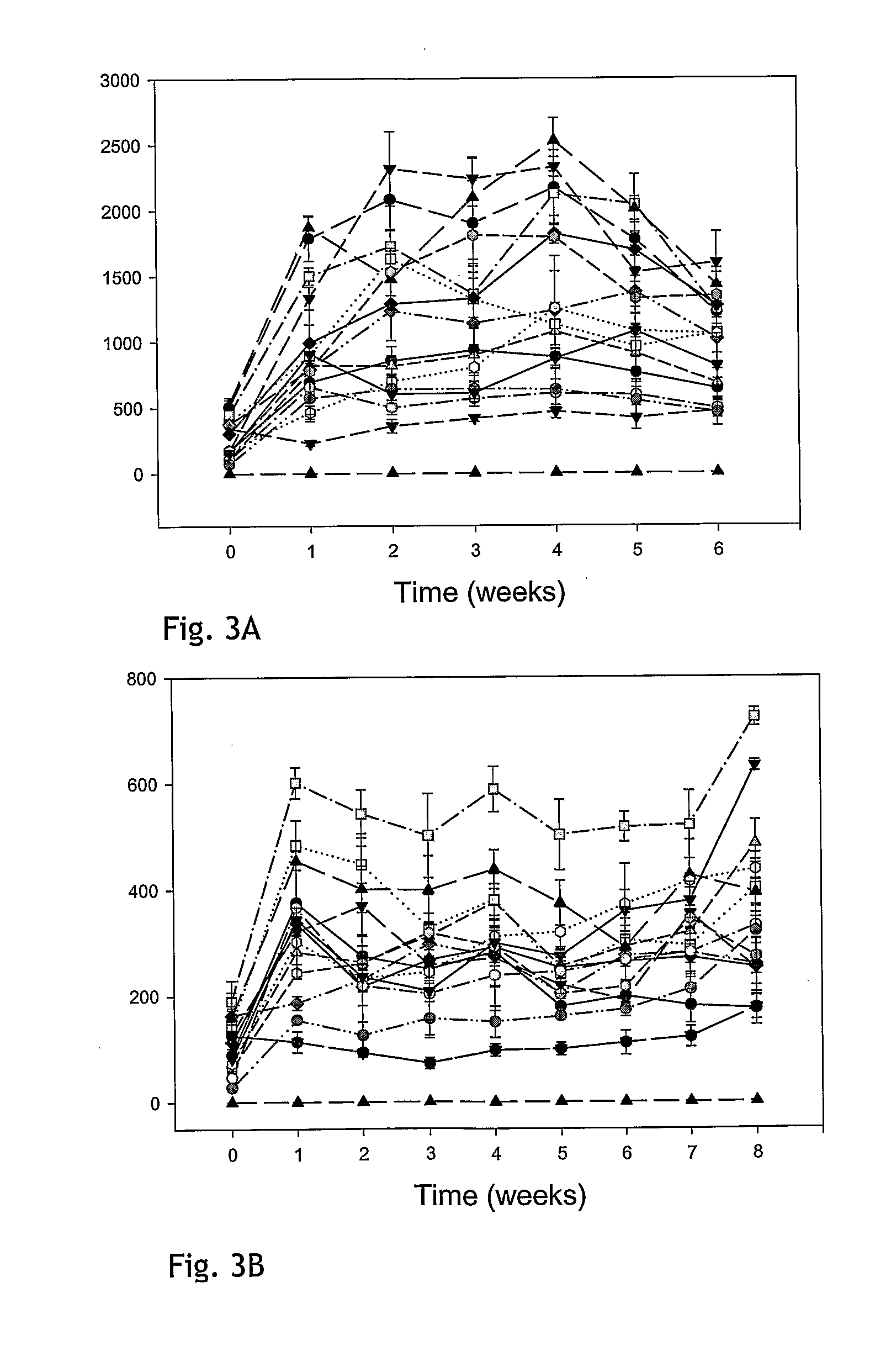Implantable Biocompatible Immunoisolatory Vehicle for Delivery of Gdnf
a biocompatible, immunoisolation technology, applied in the direction of peptide/protein ingredients, drug compositions, genetically modified cells, etc., can solve the problems of reducing the stability of the blood brain barrier, and reducing the risk of zoonosis and adverse immune reactions. , the effect of reducing the risk of “units”
- Summary
- Abstract
- Description
- Claims
- Application Information
AI Technical Summary
Benefits of technology
Problems solved by technology
Method used
Image
Examples
example 1
Cloning and Expression of GDNF
[0189]Cloning of GDNF from caudate nucleus polyA mRNA
[0190]cDNA was synthesized from Caudate nucleus polyA mRNA (Clontech, Becton Dickinson, catalog number 636132) as described previously (Current Protocols in Molecular Biology). A fragment encoding long isoform of pre-pro- was amplified from cDNA by PCR using the primers rGDNFs (5′-GGTCTACGGAGACCGGATCCGAGGTGC-3′; SEQ ID No 15) and rGDNFas (5′-TCTCTGGAGCCAGGGTCAGATACATC-3′; SEQ ID No 16) essentially as described in Schaar et al. 1994 (Exp. Neurol. 130, 387-393). The resulting PCR product was purified and cloned into the SrfI site of pCRScript vector (Stratagene). Subsequently, the GDNF cDNA fragment was subcloned into the BamHI / XhoI sites in pNS1n and pCln.hNGF to yield pNS1n.hGDNF and pCln.hG, respectively. pNS1n is a customised vector derived from pcDNA3 (Invitrogen) with expression under control of the cytomegalovirus promoter carrying the neo resistance marker instead of zeo (Jensen et al 2002, J Bi...
example 2
Evaluation of GDNF Release from Confluent Stable Clones
[0195]To evaluate the stability of GDNF release in confluent cultures of stable clones, a fixed number of cells were seeded in growth medium. The next day, medium was replaced with Human Endothelial Serum-free Medium (HE-SFM) from Invitrogen (cat#11111-044) or growth medium. After 4 h incubation, media were removed and subjected to GDNF ELISA analysis using the DuoSet human GDNF ELISA kit (REF RED systems) according to the manufacturer's recommendations. ELISA values were calculated as ng GDNF / ml / 24 h. Cells were allowed to grow to confluency in HE-SFM or growth medium and were maintained in culture for up to 8 weeks. GDNF release in 4 h media was determined every week. The GDNF levels for representative clones transfected with the constructs pCln.hG and pNS1n.hGDNF are shown in FIGS. 3A and 3B. At the end of the experiment, cells were trypsinated and counted. FIG. 4A shows GDNF release for week 4 in HE-SFM calculated as ng GDNF...
example 3
Processing and Glycosylation of GDNF Secreted from ARPE-19 Cells
[0196]The purpose of this experiment is to analyse GDNF secreted from transfected ARPE-19 clones in Western blot analysis to confirm glycosylation and correct processing of the secreted GDNF.
[0197]Briefly, conditioned media from GDNF-producing ARPE-19 cells were diluted in deglycosylation reaction buffer (Prozyme Enzymatic Deglycosylation kit #GK80110) to a concentration of 0.2 ng / μl according to ELISA results. Recombinant mammalian produced hGDNF (R&D systems #212GD) was diluted to the same concentration and used as reference. Deglycosylations with and without denaturing step were performed according to protocol 3.2 and 3.3 provided by manufacturer. Samples were etectrophoresed on 8-18% gradient SDS gets. E. coli produced hGDNF (Alomone Labs #G-240) was used as a reference for non-glycosylated GDNF. Proteins were transferred to PVDF membrane. The blocked membrane was incubated with anti-GDNF antibody (R&D Systems, No A...
PUM
| Property | Measurement | Unit |
|---|---|---|
| volume | aaaaa | aaaaa |
| volume | aaaaa | aaaaa |
| diameter | aaaaa | aaaaa |
Abstract
Description
Claims
Application Information
 Login to View More
Login to View More - R&D
- Intellectual Property
- Life Sciences
- Materials
- Tech Scout
- Unparalleled Data Quality
- Higher Quality Content
- 60% Fewer Hallucinations
Browse by: Latest US Patents, China's latest patents, Technical Efficacy Thesaurus, Application Domain, Technology Topic, Popular Technical Reports.
© 2025 PatSnap. All rights reserved.Legal|Privacy policy|Modern Slavery Act Transparency Statement|Sitemap|About US| Contact US: help@patsnap.com



